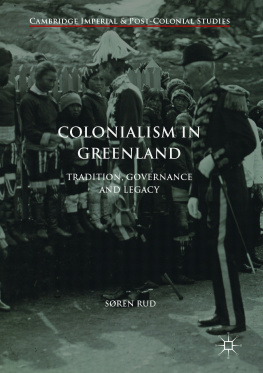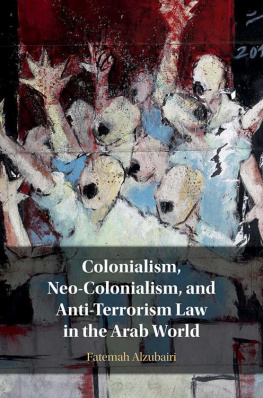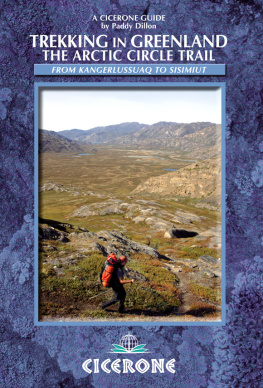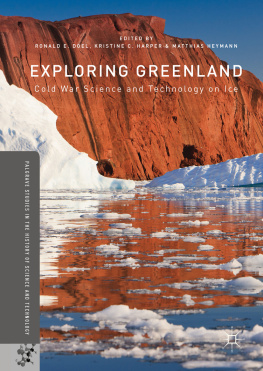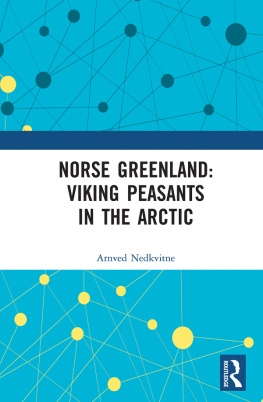Colonial pasts are sensitive and unsettling matters. Their presence serves as a reminder of uncomfortable historical trajectories. Historical narratives of the colonially ruled are linked with notions of national identity for the former colonizers as well as the formerly colonized, and these narratives have the capacity to provoke strong emotional responses. The relationship between Denmark and Greenland is deeply marked by the legacy of colonialism.
This book offers an analysis of the colonial project in Greenland. More specifically, the following chapters seek to add nuance and qualify one-dimensional images of the past and their related past and present identitiescrucial in the current situation where assessments are characterized either by the destruction (or perceived destruction) of the traditional Inuit culture or a naive celebration of exceptional Danish benevolence. It draws attention to the equivocal nature of the colonial practices and deals with the establishment of an ethnographic discourse, the way in which this ethnographic knowledge was utilized in a specific form of colonial governance, the past and effects of this colonial epistemology including the legacy of colonialism in Greenland and Denmark today.
The Relationship Between Denmark and Greenland
Fifty times the size of Denmark, Greenland is known as the worlds largest island. The country is characterized by its extreme geographical conditions. Approximately 80 percent of Greenlands area is covered by a gigantic ice sheet (approximately 1.8 million km2) yet the ice-free coastal areas equal the size of Germany. The population of around 56,000 inhabitants live in towns and settlements in the ice-free coastal regions, mainly along the west coast, which is more accessible by ship. No roads connect the towns or settlements in Greenland and all transportation is by ship, helicopter, or plane. The lack of infrastructure and the geographical realities present great challenges to contemporary Greenland.
The Greenlandic population can be divided into four main categories: (1) West Greenlanders (around 80 percent); (2) East Greenlanders (around 6 percent); (3) North Greenlanders in Avanersuaq [the great North], also known as the Thule area (around 1.5 percent); and (4) the remainder comprising a group of predominantly Danish inhabitants. The composition of the population reflects the long relationship between Greenland and Denmark; many Greenlanders have family ties to Denmark as a result of marriage or migration.
The colonial phase began in 1721, when the Danish-Norwegian priest Hans Egede established a mission and trading activities in the area of the present-day capital Nuuk, and this phase lasted until 1953, when Greenland was integrated into the Danish Realm. Greenlanders born before 1953 were thus born in the official colonial period and they have experienced the palpable consequences of the modernization policies in the subsequent period. They have also witnessed a period of political mobilization against inequalities and a lack of cultural and political recognitionculminating in the Greenland Home Rule Act in 1979 and the Self-Government Act in 2009. In spite of Greenlands increased political autonomy, the interconnection between Greenland and Denmark is strong. Yet, the ambiguous legacy of colonialism remains somewhat unresolved in both countries.
The Self-Government Act stipulates the Greenlanders status as a distinct people in the Realm with the right to self-determination; the Greenlandic and Danish parliaments are considered equal parties. However, Denmark still retains authority over political fields such as foreign policy, security, and international agreements. Intimately tied together at political and cultural levels, they are also economically bound. Greenland depends on annual grants from Denmark which cover more than half of the public spending of the Greenlandic government.
Danish Exceptionalism
At the height of its career as a colonial power in the eighteenth and nineteenth centuries, Denmark was engaged in India (16201845), Africa (16591850), the Caribbean (16721917) and the North Atlantic (Greenland, Iceland, and the Faroe Islands). This small colonial empire gradually began to diminish in the mid-nineteenth century when Great Britain took over in India and the Gold Coast. In 1917, the Danish government sold the Danish West Indies (today the US Virgin Islands) to the USA. In 1930, Danish Prime Minister Thorvald Stauning claimed that Greenland was Denmarks last colony.
In spite of its colonial past Danish historians and anthropologists have only slowly taken theoretical and methodological inspiration from the field of postcolonial studies since the 1990s.
In a similar vein, Danish scholar Lars Jensen has strongly critiqued what he perceives to be a Danish lack of interest in acknowledging the colonial past. In his book, Danmark. Rigsfllesskab, tropekolonier og den postkoloniale arv [Denmark: realm, tropical colonies and the postcolonial legacy], Jensen analyzes a multiplicity of texts, with diverse views on Danish colonialism ranging from apologetic, chastising, and apparently objectively analyzing, and concludes that all of them fundamentally underpin the same whitewashing of Danish colonialism. Commenting on the Greenlandic reconciliation commission Jensen notes:
In relation to the Greenlandic reconciliation commission it is of course interesting that there was no slavery. This, however, does not mean that the Danish presence cannot be seen as a history of abuses. That is after all what colonialism is. Here it is significant that the commission concerns itself with the period of modernization, which by strictest definition is postcolonial, because it was after Greenland gained its own distinct status.
While I sympathize with the project of deconstructing the hollow narrative of Scandinavian exceptionalism, I find it pertinent to apply an historical analysis that allows the specifics of the various colonial projects to emerge. As Nicholas Thomas notes: Colonialism can only be traced through its plural and particularized expressions []. Danish practices relating to the slave trade and planter-slave colonialism were every bit as brutal and inhumane as the practices of other powers in similar colonial projects. And Denmark was every bit as invested as other western nations in the production of hierarchized notions of culture, race, and society. However, deconstructing the narrative of Scandinavian exceptionalism must not entail the conflation of all colonial projects into a hodgepodge of brutality and oppression.
The following chapters have been organized to address several deconstructions of sometimes all-too familiar narratives about Greenland. (Ethnography, Time, and the Idealization of Tradition) shows how an idealized perception of Greenlandic/Inuit-culture was forged throughout the colonial period. This view of the uncolonized Greenlanders as the true representatives of Greenlandic/Inuit-culture became increasingly dominant in nineteenth-century ethnographic portrayals of the Greenlanders. Expeditions to uncolonized areas of Greenland reinforced this tendency. The focus centers on ethnographic work carried out by missionaries, administrators, and participants in expeditions to the East Coast and the northwestern part of Greenland.
(Invoking Tradition as a Governance Strategy: Danish Colonial Policies in the Late Nineteenth Century) continues the discussion of the nascent cultural idealization, and how it became a strategic tool used by the government when important colonial reforms were implemented toward the middle of the nineteenth century. The declared objective of these colonial reforms was to restore the traditionally revered position of the most proficient seal hunters in the local communities by establishing local boards in (and through) which the seal hunters gained political influence, prestige, and economic benefits. Given the nature of the implemented changes, however, the reforms caused a transformation rather than a restoration of the Greenlandic communities.

